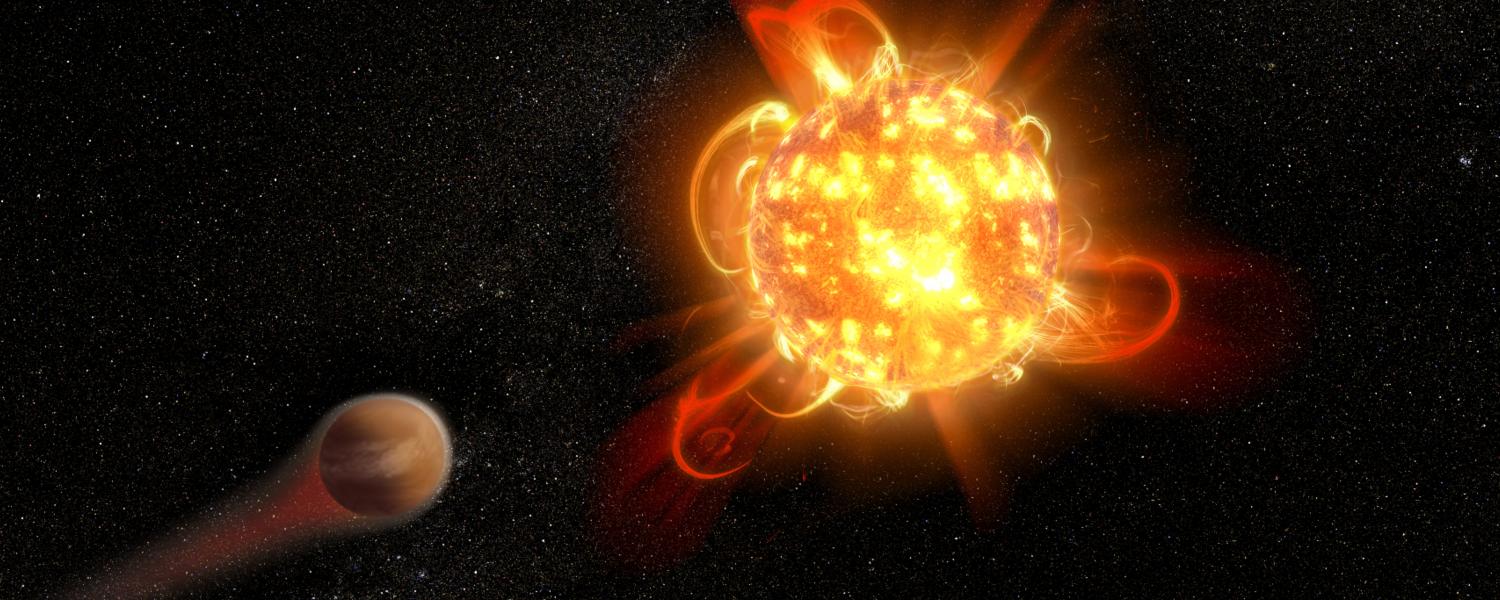Our Aging Sun Is Still Capable of Unleashing 'Superflares.' Should We Worry?

The mature sun may still be prone to temper tantrums. A new study suggests that older stars like the sun can produce superflares — huge bursts of energy visible across hundreds of light-years.
Superflares used to be thought of as a younger-star phenomenon, researchers said in a statement about the new study, but the new work suggests it can happen on the sun at rare intervals, of perhaps once every few thousand years. (The sun is about 4.6 billion years old and midway through its lifetime.)
The sun is hard to predict on even a daily basis, so it's difficult to say when a superflare would occur. However, the new work's lead author, Yuta Notsu — a visiting researcher at the University of Colorado Boulder — said this possibility should inspire everyone to beef up electronics against radiation.
Related: The Sun's Wrath: Worst Solar Storms in History
"If a superflare occurred 1,000 years ago, it was probably no big problem. People may have seen a large aurora," Notsu said in a statement, referring to the dancing Northern Lights or Southern Lights produced by solar particles interacting with molecules of Earth's atmosphere. "Now, it's a much bigger problem because of our electronics."
We already know the power of the sun can knock out power lines, electronics and satellites. Coronal mass ejections from the sun — or large plumes of charged particles — have caused issues with our infrastructure in the past, such as the extraordinary 1859 Carrington Event superstorm that affected telegraph communications. A superflare, however, would be worse. The superflare would be hundreds or thousands of times more powerful than the most active solar flares recorded.
"If a superflare erupted from the sun ... Earth would likely sit in the path of a wave of high-energy radiation. Such a blast could disrupt electronics across the globe, causing widespread blackouts and shorting out communication satellites in orbit," representatives from the University of Colorado Boulder said in the statement.
Breaking space news, the latest updates on rocket launches, skywatching events and more!
The new superflare data came from NASA's Kepler space telescope, which looked for planets at faraway stars between 2009 and 2018. While looking for new worlds, Kepler also saw a lot of star activity. It spotted a few superflares, moments when the starlight would suddenly get brighter before dimming again.
Curious about Kepler's findings, the researchers looked to the European Space Agency's Gaia spacecraft — which studies stellar movements and brightnesses across a billion stars — and the Apache Point Observatory in New Mexico.
The two telescopes saw 43 superflares that came from stars similar in age and size to our own sun, the study's researchers said. Statistics from their data show that most superflares do come from younger stars, which can flare about once a week. And our own sun is still prone, but just once every few thousand years.
Notsu presented his research Monday (June 10) at the 234th meeting of the American Astronomical Society in St. Louis. The results were also detailed May 3 in The Astrophysical Journal.
- 'Superflares' May Make It Hard for Life to Thrive on Earth's Nearest Exoplanet
- Ancient Solar Superflare Suggests Risks for Mars Missions
- Red Dwarf Star's Mighty 'Hazflare' Could Be Bad News for Alien Life
Follow Elizabeth Howell on Twitter @howellspace. Follow us on Twitter @Spacedotcom and on Facebook.
Join our Space Forums to keep talking space on the latest missions, night sky and more! And if you have a news tip, correction or comment, let us know at: community@space.com.

Elizabeth Howell (she/her), Ph.D., was a staff writer in the spaceflight channel between 2022 and 2024 specializing in Canadian space news. She was contributing writer for Space.com for 10 years from 2012 to 2024. Elizabeth's reporting includes multiple exclusives with the White House, leading world coverage about a lost-and-found space tomato on the International Space Station, witnessing five human spaceflight launches on two continents, flying parabolic, working inside a spacesuit, and participating in a simulated Mars mission. Her latest book, "Why Am I Taller?" (ECW Press, 2022) is co-written with astronaut Dave Williams.
